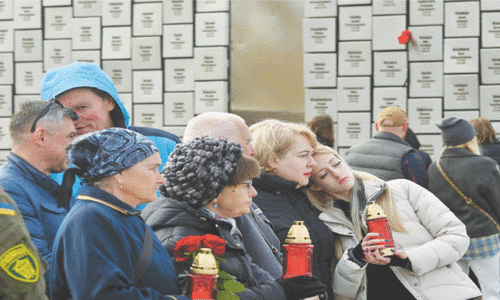The language in the digital world
SHOULD we assume that the Urdu language is at the threshold of a computer age? In fact, we have received such a message from Delhi. The newly emerged institution born in that city known as Rekhta Foundation has come out with a claim that it has done much spade work in paving the way for Urdu to land in the computer age. With this promise to the Urdu world it invited, from different countries, more particularly from Pakistan, a number of Urdu writers and scholars in Delhi, where a glamorous Urdu festival was awaiting them.
However, I eagerly wanted to know in concrete terms about their performance so far in this respect. The brief provided said that Rekhta Foundation has established a free website www.rekhta.org with the “objective of promoting and disseminating Urdu literature especially Urdu poetry to an audience beyond those conversant with Urdu script. So the content is available in Devanagri and Roman scripts in addition to the Urdu script.”
The brief, in addition, informed us that “the website has a global readership from over 160 countries across the globe … is the largest online repository of Urdu poetry anywhere with over 12,000 ghazals and nazms of over 1,200 Urdu poets of over the last three centuries. It has a large number of features that make it extremely user-friendly and provide the reader with an unparalleled convenience to browse, search and find relevant content.”
The Rekhta Foundation has also started, according to its organisers “an initiative to digitise Urdu literature, both poetry and prose, in order to preserve rare and popular Urdu books. Apart from sourcing books from personal collections of various people, it has also associated with reputed libraries and organisations to digitise their collections … Established literary figures from India, Pakistan, Canada and Middle East are also invited and recorded at Rekhta, and are available to be heard and seen by all interested viewers”.
In addition, the head of the foundation Mr Sanjiv Saraf conveyed to us that all the books of Urdu literature published by Naval Kishore Press have been uploaded on Rekhta’s website too.
With this achievement to its credit Rekhta Foundation held its Jashn-e-Rekhta, or its Urdu festival. The festival was mostly a mixed gathering of Hindu and Muslim youths. One may say that Urdu, with its roots deep in the soil of Delhi, was re-asserting itself in the modernised climate of this age-old city.
It was a rare occasion, which provided for Urdu an opportunity to come out of its close circle of Urduwallas and cast a spell on the huge multilingual audience gathered there. In this respect three sessions in particular need to be mentioned: one was a music session reserved for ghazals sung by the late Begum Akhtar previously known as Akhtari Bai Faizabadi. The next was dastangoi ki mehfil, where the young dastango Danish Husain and Vidya Shah were seen reviving the charming art of dastan recitation which Urdu had developed in days past. The third was a session reserved for Zia Mohyeddin’s recitation of select pieces of Urdu prose and poetry. In each of these sessions Urdu had something special to offer to this multilingual audience, which was seen responding exuberantly.
The discussion session devoted to a dialogue between Hindi and Urdu writers needs to be mentioned in particular. It was perhaps for the first time that writers belonging to the two languages — who are considered rivals — were invited to discuss in a session titled ‘Urdu aur Hindi: Qurbaten aur Faasle’. Shamim Hanafi representing Urdu was in dialogue with two Hindi writers Ashok Vajpeyi and Kedarnath Singh.
However, here both sides were in a conciliatory mood ignoring the unpleasant history of estrangement the languages share. They were rather engaged in exploring points bringing the two languages and their exponents closer.
Here, I am reminded of a controversy about Premchand’s novel Gaoodan, which was published both in Urdu and in Hindi. Urduwallas claimed it was originally written in Urdu, while Hindiwallas insisted that it was first written and published in Hindi. But this very situation can be treated as a way to bring the two factions closer to each other. To be more precise, why not treat Premchand’s and his many stories written and published in Urdu as well as in Hindi as one, and at the same time as a bridge between the two languages, and consequently between their exponents?
At least here, on this occasion, both sides appeared in a very good mood. So Vajpeyi declared in the end that Hindi is very much in need of Urdu to play its role effectively. The same is also true in the case of Urdu.














































